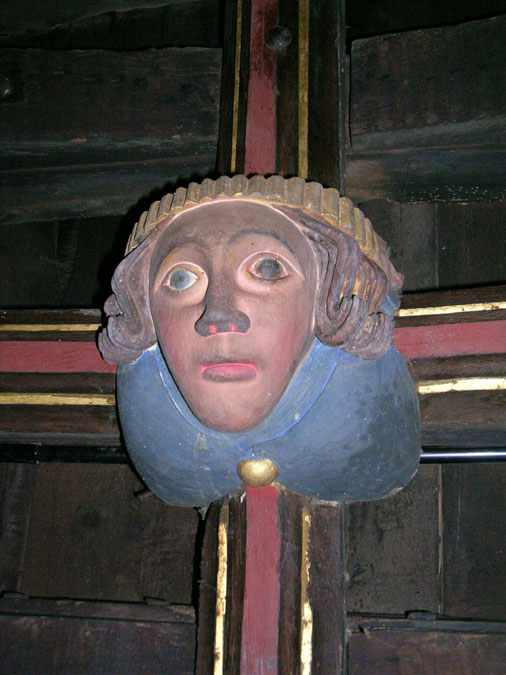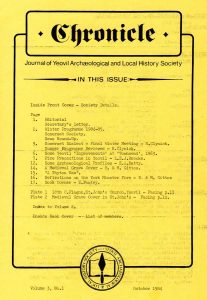SOME ARCHAEOLOGICAL PROFILES
Author: E.A.Batty
HAROLD ST. GEORGE GRAY :
For many years a considerable part of my working life was passed in close proximity to the volumes of the annual “Proceedings” of the Somerset Archaeological Society, These beginning in 1849-50 and meticulously added, year by year, were an inducement to browsing and browsing seldom failed to up the name of Harold St. George Gray. Gray was always contributing, discovering, presiding or active in one way or another. When I came to him, personally, I found he was indeed a fount of knowledge on museum matters and withal a very kind man. This despite a remark on his ‘unapproachability’ from the late Mr.John Goodchild who claimed that he (Gray) would never let reporters near him, except Western Gazette ones. I say “kind’ because when I asked Gray for a testimonial he let me down very lightly indeed by saying “with all your good work one thinks of you as a librarian not a museum curator”. This, of course, was no more the truth. I cannot now think what inspired me to wish to step outside my proper sphere. My last recollection of Gray is at a meeting of the South Western Museums Group when he fulfilled some office, (president, secretary or treasurer) with admirable verve and was then, I think he was in his eighties. What a career to look back on! As a young man he was secretary-assistant to the great Pitt-Rivers and that huge and bulky blue volume on the Excavations at Cranbourne Chase owes a great deal to him. He was right hand man of A.W.Vivian Neal, undisputed authority on most aspects of archaeology in the south west, Treasurer and Secretary of the S.A.S., President of the Society, Curator and Custodian of Taunton Castle. I sometimes wonder what impression that, bald cranium made on the natives of Martock during his last days in the Treasurer’s House.
SIR MORTIMER WHEELER AND W.R.E.MITCHELMORE :
“Who was a Mortimer Wheeler? He only wrote a book”. So spoke a local worthy, Alderman W.R.E.Mitchelmore, three times Mayor of Yeovil but now (I think) remembered mainly as giving his name to a row of council housing. Mitchelmore was an amateur archaeologist whose knowledge was greatly exceeded, by his enthusiasm, he took great pride in his association with the Westland dig undertaken at the request of the Town Council by the celebrated Mortimer Wheeler. That he (Mitchelmore) actually did some work on this dig is perpetuated by official sources (extracted. from the Proceedings) which reproduced a photograph of the worthy Alderman attacking a small stone with a large hammer. I have the feeling he always thought of Westland as of “his dig”. My memories of Mitchelmore are numerous and varied since I was in almost daily contact with him, but I began this paragraph with Wheeler principally in mind. An account of his work in India and Pakistan published in 1976 contains some astonishing photographs including one with Leslie Alcock (who will be known to many of us) surmounting a colossal pyramid of the workforce at Mohenjo-Daro. The opening paragraph of the book is revealing. In it Sir Brian Horrocks is described apprising Wheeler of his appointment as Director General of Archaeology in India while both were engaged in fighting Rommel in the Western Desert, and saying with a tinge of regret “you know Mortimer, I always thought of you as a soldier”. Looking back on his career one feels Mortimer might have become equally famous as a military man. My own recollections are confined to a memorable evening at the BBC, when the television programme “Animal, Vegetable, Mineral?” was widely popular. and Yeovil Museum contributed (I think) two objects with the hope of puzzling the experts. Beside Mortimer the only expert that night was Sir Thomas Bodkin, a little man with a goatee beard from Dublin.
At the dinner preceding the show Wheeler was at his most rumbustious but appeared sober as a judge when it was time for the programme, under the urbane chairmanship of Glyn Daniel, to go on the air. It was decided one of the objects could be a mason’s level (or some primitive equivalent) thought possibly to have been used in the building of St.John’s, Yeovil, Church Tower and the other object the Roman figure which is one of the Museums prize possessions: the bronze god Mars, to whom one Iaventus Sabinus pays his vows “gladly, willingly, deservedly”. It was on this occasion that Wheeler used the phrase “I was there when it was dug up”, which later became a great joke. The published life by Jacquetta Hawker reveals the man’s astonishing energy.
W.H.J.CLIFFORD :
Returning to the “Proceedings,”, in the year 1897 we find the President of the Society was, of all people, a Roman Catholic Bishop, W.H.J. Clifford. He was a keen archaeologist attending every meeting, usually with his friend and colleague Bishop George Errington. This industrious, socially gifted and urbane pair confuted the then popular idea. that Roman Catholic Bishops were all adorned with horns and a tail. Membership of the Society in those days, judging by the authorship of papers and addresses, seems to have been largely confined to Anglican clergy and the well-to-do, being the class of persons most likely to have the necessary leisure. Clifford’s name occurs with some frequency and on one occasion he is described as contributing a “very bright gleam of light” by identifying as a holy-water stoup an object which an Anglican Vicar had pronounced to be an alms box. In his presidential address concerning the Alfred jewel he advanced the theory that it was in fact, the handle of a book-staff or pointer, long since decayed. It was, additionally one of those which were worked by order of Alfred himself and inserted in the. “Herdsman’s book”. To account for the location he suggested it had been presented to the Abbot of Athelney. This last idea may have been to stir up speculation on the matter since I note from Mrs. Lovett Turner’s Somerset and others the actual location of the find was North Newton two or three miles distant from the Abbey. As a representative of one of the oldest recusant Catholic families, Clifford might well have been eligible for higher office but his opposition to the 1870 Papal decree changed all that and lie died quietly in retirement in 1893.

